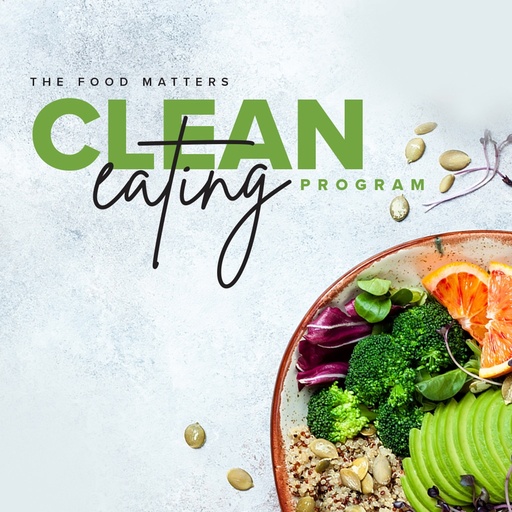Is Your Pillow Making You Sick?
Ahhh... After a long day, you slide into bed. It’s the first chance you’ve had to rest since waking up that morning. The pillow softly cradles your head as your eyes flutter closed. You feel the worries of the world gently melt away…
When you rest your weary face against your pillow, did you know that this soft, comforting cradle could actually be making you sick?
Find out how a pillow can wreak havoc with your health and what you can do to ensure blissful and truly revitalizing slumber!
What’s Hiding In Your Pillow?
At ‘face’ value, your pillow seems pretty innocuous. It’s just a wad of stuffing that supports your neck, right?
Wrong.
During their lifetime of service to your sleep, pillows become a fertile breeding ground for all kinds of bugs, fungi and mold.
In fact, one study found that the average pillow actually contains over one million fungal spores!
How Can My Pillow Possibly Make Me Sick?
We spend all night with our face pressed against this potential reservoir of germs. During the average human lifespan, that adds up to 25 years (one third of our life) of direct exposure to fungi, mites and potential pathogens.
It’s not just a gross concept; mites, fungi and bacteria can have real implications for your health. The most common form of fungus found in pillows, Aspergillus fumigatus, has been linked with adverse health outcomes in immunocompromised individuals. This miniscule fungus can also trigger reactions in people with sinusitis or asthma. In fact, it may also cause respiratory issues even among those of us who don’t have asthma.
In a similar vein, dust mites can also trigger allergic reactions while you slumber. These miniscule bugs are related to spiders and ticks, and love to make a home in pillows and bedding. While the mites don’t directly cause any health issues, their droppings can trigger hay fever, asthma, eczema and rhinitis. It is estimated that 500 million people across the globe are sensitive to this dust mite poop!
Furthermore, even if you don’t have asthma, allergies or any other known respiratory issues, breathing in those nasties puts your immune system under additional pressure. While your body may be capable of fighting these pathogens off, this diverts your immune system away from doing other important work. So give your immune system a break and care for your pillow!
Tips To Care For Your Pillow Properly
Dust mites, fungi and mold all share a common trait; they love a warm, damp environment. And pillows provide ample moisture and warmth from the sweat and heat we produce throughout the night. Furthermore, our dead skin cells provide a great source of nutrition for these invaders.
If you don’t want your pillow to provide the perfect ecosystem for bacteria, mold and mites, follow these simple tips to maintaining good pillow hygiene. While we can never eliminate the presence of these invisible assailants, proper pillow care will keep their numbers in check and minimize their effect on your health.
Tip #1. Dry your hair before bed.
As mentioned earlier, bacteria, fungi, mold and mites require moisture to survive and thrive. Going to bed with a head of wet hair allows moisture to seep directly into your pillow, creating the perfect environment for unwanted nightly visitors to multiply. Dry your hair well before bed or shower with ample time for your hair to dry naturally.
Tip #2. Make your bedroom a pet-free zone.
As nice as it is to wake up with your furry friends, pets carry and attract a bunch of bacteria that contribute toward poor pillow and bedding hygiene. Therefore, keep pets away from your sleep zone and enjoy their company outside the bedroom.
Tip #3. Minimize excess pillows and bedding.
As nice as it is to enjoy elegant bedroom decor, excess soft furnishings on your bed provide extra space for mites and fungi to inhabit. Additionally, as we don’t sleep directly on throws or decorative pillows, these tend to be washed far less often. Choose a stylish, washable bedspread and keep the other trappings to a minimum.
Tip #4. Declutter, dust often and vacuum regularly.
Just like soft furnishings attract mites and unwanted wrigglies, so do dusty ornaments! General mess, clutter and dusty surfaces create an unhygienic sleep environment that can overflow into poor bedding hygiene. Keep decor to a minimum to reduce dust-attracting surfaces, clean regularly and vacuum your bedroom - particularly if you have carpets or rugs - as often as possible.
Tip #5. Use a HEPA vacuum or filter.
While HEPA vacuums or filters are a little more expensive, they can be a worthwhile investment if you are waking up with a dripping nose or have multiple allergies/sensitivities. HEPA is designed to extract tiny bugs and pathogens from the air, providing far more than a standard surface clean. You may also like to purchase a dehumidifier for the bedroom, as mites and microorganisms prefer a humid atmosphere.
Tip #6. Avoid sheepskin underlays.
True, they may feel warm, soft and fluffy. However, they do attract mites and are difficult to clean; best to avoid altogether.
Tip #7. Replace your pillows regularly.
Despite an utmost effort to care for your pillows, they all unfortunately have a ‘use by’ date. In fact, some pillows explicitly state a ‘use by’ date on their packaging. Put this date in your phone or google calendar with a note to replace your pillows accordingly.
As a general rule of thumb, synthetic pillows should be replaced every two years at a minimum.
And when you consider that five-year-old pillows contain double the mold of their two-year-old younger counterparts (and that the types of mold present increase with age!) it’s well worthwhile to update your pillows often.
Tip #8. Wash your pillows regularly.
The American Lung Association advises to wash bedding in hot water a minimum of once per week. Don’t forget to include your covers, duvets and comforters.
Sunlight and hot water are antithesis to mites, mold and bacteria. Therefore, wash your pillows and bedding in hot water and leave to dry thoroughly. (Check individual care details for further instructions.)
Providing that your pillow is fire retardant and the safety care instructions indicate that it is safe to do so, placing your pillows in a hot dryer each week will also help to mitigate mites and bacteria. Otherwise, simply air your pillows out in direct sunlight.
On a final note, vacuum your bare mattress. Just remember to use a clean attachment!
Tip #9. Get a dust mite cover for your pillow.
Yes, these really exist! They will help to filter mites and other unwanted contaminants from the air you breathe while you sleep. Look for a variety with a high thread count - it will permit the pillow to breathe while reducing how much toxic material you breathe in.
Tip #10. Keep cool.
During the course of a year, humans sweat up to 26 gallons in our sleep! This may help to transfer bacteria from your skin and into your mattress and pillows. It also fosters a bacteriogenic environment.
Therefore, try to keep your bedroom at a nice, cool temperature and don’t overdress for bed. You’ll also sleep better for it!
How To Pick A Good Pillow
There are many options to choose from and it’s hard to pick a ‘perfect pillow’ as most varieties offer a blend of pro’s and con’s.
Furthermore, the lifespan of your pillow will also depend on how well you care for it. One quick test is to fold your pillow in half and place a book on top. If the book keeps your pillow folded in place, it’s definitely time to go shopping!
Here are a few things to consider when choosing a pillow that’s right for you:
- Go as low-toxic as possible. Certain foam pillows contain chemicals such as formaldehyde and toluene diisocyanate, which are potentially carcinogenic and allergenic. Furthermore, some goose down pillows may still contain toxic pesticides. Do your due diligence by researching this carefully with the manufacturer before buying.
-
Ditch the feather. According to certain researchers, many people with sinus issues respond well to throwing out the feather quilts and covers.
-
Spend as much as you can afford. Microfiber and polyester are inexpensive and generally machine washable. However, they can grow mold and attract mites more easily, so invest in a more expensive low-allergenic pillow, if possible.
-
Choose breathable. Organic Cotton is a great option here as it tends to be less allergenic and naturally breathable, meaning less sweat is retained in your pillow.
It’s now estimated that we sleep 30% less than the generation before us, yet we all know that sleep is critical to our health and wellbeing. So make every hour count by picking a pillow that supports good health.











